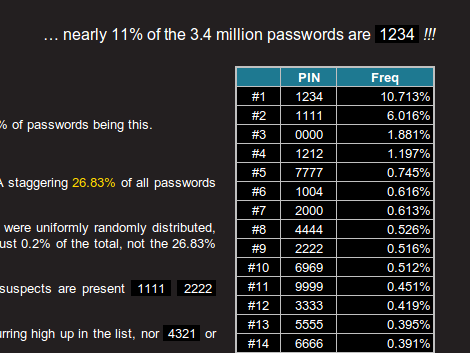When a consumer electronics device is sold in the US, especially if it has a wireless aspect, it must be tested for compliance with FCC regulations and the test results filed with the FCC (see preparing your product for FCC testing). These documents are then made available online for all to see in the Office of Engineering and Technology (OET) Laboratory Equipment Authorization System (EAS). In fact, it’s this publishing in this and other FCC databases that has led to many leaks about new product releases, some of which we’ve covered, and others we’ve been privileged enough to know about before the filings but whose breaking was forced when the documents were filed, like the Raspberry Pi 3. It turns out that there are a lot of useful things that can be accomplished by poring over FCC filings, and we’ll explore some of them.
database31 Articles
A Trove Of 3D Printer Filament Test Data
We’re not sure what a typical weekend at [Walter]’s house is like, but we can probably safely assume that any activity taking place is at minimum accompanied by the hum of a 3D printer somewhere in the background.
Those of us who 3D print have had our experiences with bad rolls of filament. Anything from filament that warps when it shouldn’t to actual wood splinters mixed in somewhere in the manufacturing process clogging up our nozzles. There are lots of workarounds, but the best one is to not buy bad filament in the first place. To this end [Walter] has spent many hours cataloging the results of the different filaments that have made it through his shop.
We really enjoyed his comparison of twleve different yellow filaments printed side by side with the same settings on the same printer. You can really see the difference high dimensional tolerance, the right colorant mix, and good virgin plastic stock makes to the quality of the final print. Also, how transparent different brands of transparent actually are as well as the weight of spools from different brands (So you can weigh your spool to see how much is left).
The part we really liked was his list every filament he’s experienced in: PLA, ABS, PETG, Flexible, Nylon, Metal, Wood, and Other. This was a massive effort, and while his review is naturally subjective, it’s still nice to have someone else’s experience to rely on when figuring out where to spend your next thirty dollars.
OneSolver Does What Wolfram Can’t
Wolfram Alpha has been “helping” students get through higher math and science classes for years. It can do almost everything from solving Laplace transforms to various differential equations. It’s a little lacking when it comes to solving circuits, though, which is where [Grant] steps in. He’s come up with a tool called OneSolver which can help anyone work out a number of electrical circuits (and a few common physics problems, too).
[Grant] has been slowly building an online database of circuit designs that has gotten up to around a hundred unique solvers. The interesting thing is that the site implements a unique algorithm where all input fields of a circuits design can also become output fields. This is unique to most other online calculators because it lets you do things that circuit simulators and commercial math packages can’t. The framework defines one system of equations, and will solve all possible combinations, and lets one quickly home in on a desired design solution.
If you’re a student or someone who constantly builds regulators or other tiny circuits (probably most of us) then give this tool a shot. [Grant] is still adding to it, so it will only get better over time. This may be the first time we’ve seen something like this here, too, but there have been other more specific pieces of software to help out with your circuit design.
Investigating The Strength Of The 4-digit PIN

If we wanted to take a look at the statistics behind 4-digit pin numbers how could we do such a thing? After all, it’s not like people are just going to tell you the code they like to use. It turns out the databases of leaked passwords that have been floating around the Internet are the perfect source for a little study like this one. One such source was filtered for passwords that were exactly four digits long and contained only numbers. The result was a set of 3.4 million PIN numbers which were analysed for statistical patterns.
As the cliché movie joke tells us, 1234 is by far the most commonly used PIN to tune of 10% (*facepalm*). That’s followed relatively closely by 1111. But if plain old frequency were as deep as this look went it would make for boring reading. You’ll want to keep going with this article, which then looks into issues like ease of entry; 2580 is straight down the center of a telephone keypad. Dates are also very common, which greatly limits what the first and last pair of the PIN combination might be.
We’ll leave you with this nugget: Over 25% of all PINs are made of just 20 different number (at least from this data set).
[Thanks Awjlogan]
Arduino, RFID, And You

[Matt] has mixed up a batch of two RFID reading door lock systems. While the “door lock” part of the setup has yet to come into existence, the “RFID reading” section is up and running. By using the Parallax RFID readers (for cheap, remember?) and an Arduino, [Matt] is able to parse an RFID tag, look its number up in a database, and then have a computer announce “Access Denied” in a creamy “Douglas Adam’s sliding door of Hitchiker’s Guide” kind of way with Python.
Good books aside, catch a not as exciting as you’re thinking video after the jump.
Barcode Infiltrator
Whenever someone manages to expose vulnerabilities in everyday devices, we love to root for them. [Adrian] over at Irongeek has been inspired to exploit barcodes as a means to attack a POS database. Based on an idea from a Pauldotcom episode, he set out to make a rapid attack device, using an LED to spoof the signals that would be received by scanning a barcode. By exposing the POS to a set of generic database attacks, including XSS, SQL Injection, and other errors easily solved by input sanitation, he has created the first version of an automated system penetration device. In this case the hardware is simple, but the concept is impressive.
With the hardware explained and the source code provided, as well as a basic un-sanitized input cheat sheet, the would-be barcode hackers have a great place to start if they feel compelled to provide a revision two.
[Thanks Robert W.]
Servo Database

Starting a new robotics project and want to find the perfect servo for the job? It can be a real pain in butt sometimes. This is where ServoDatabase.com comes in. They’re compiling specifications and reviews on servos. We love seeing these databases pop up. Remember the online chip reference? You simply can not have too much reference material.
[via makezine]














